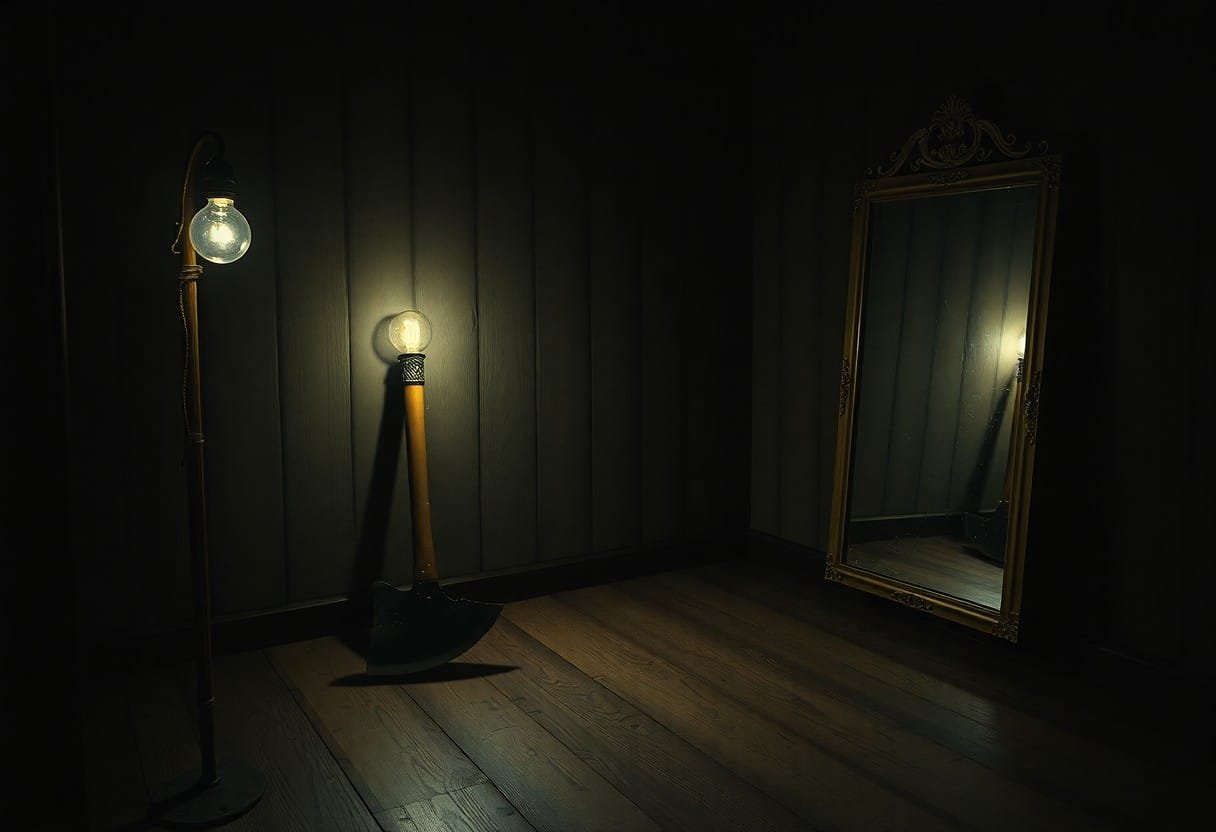Best Horror Game Mechanics You Need to Know

Horror games thrive on unsettling atmospheres and intense experiences that keep you on the edge of your seat. As you explore this captivating genre, understanding the necessary mechanics will elevate your gameplay and deepen your immersion. From psychological tension to resource scarcity, these elements are designed to elicit fear and create memorable experiences. In this guide, you will uncover the best horror game mechanics that you need to know to enhance your understanding and appreciation of this thrilling genre.
Key Takeaways:
- Atmosphere: Create an immersive environment using sound design, lighting, and visual elements to instill a sense of dread.
- Limited Resources: Implement resource scarcity to increase tension and force players to make strategic decisions under pressure.
- Psychological Horror: Utilize mind games and unexpected twists to disturb players’ expectations, enhancing the fear factor.
- Unpredictable Enemies: Include AI or enemy behaviors that are erratic, making encounters feel tense and uncertain.
- Survival Elements: Incorporate survival mechanics that challenge players to manage health, inventory, and safe zones, intensifying the horror experience.
1. Create suspense through sound design and audio cues.
2. Limit player resources for heightened tension and fear.
3. Implement unpredictable enemy behavior for constant anxiety.
4. Use darkness and lighting to create atmospheric dread.
5. Incorporate psychological elements to unsettle players mentally.
6. Offer choices with consequences to impact player experience.
Understanding Horror Game Mechanics
While you may enjoy the thrill of horror games, grasping the underlying mechanics can enhance your gaming experience. Horror games rely heavily on engaging gameplay elements, such as atmosphere, sound design, and player agency, to evoke fear and tension. By understanding these mechanics, you can better appreciate how they contribute to your overall immersion and emotional response.
Types of Game Mechanics
Now, several horror game mechanics stand out that you should know:
| Psychological Horror | Triggers anxiety and suspense through narrative and atmosphere. |
| Survival Elements | Forces resource management and decision-making under pressure. |
| Environment Interaction | Allows players to manipulate surroundings for survival. |
| Sound Design | Creates tension through unsettling audio cues. |
| Limited Vision | Restricts player visibility to evoke fear of the unknown. |
The mechanics listed above contribute significantly to the horror experience, often intertwining to build fear and tension.
Factors Influencing Player Experience
An understanding of various factors can greatly influence how you experience a horror game. Among them are narrative depth, emotional engagement, and social context that define your interaction within the game world.
- Narrative engagement enhances emotional investment.
- Player vulnerability affects fear levels.
- Multiplayer dynamics can amplify or dampen horror elements.
- Environmental storytelling fosters immersion.
- Sound cues shape anticipation and surprise.
Any of these elements can profoundly shape your gameplay, contributing either positively or negatively to the tension and atmosphere of the horror experience.
The interplay of these factors often leads to diverse responses among players. Understanding how these elements combine will allow you to better interpret and engage with your horror gaming experiences.
- Player expectations alter the impact of scares.
- Familiarity with horror tropes influences your perception of tension.
- Individual psychological factors shape reactions to horror.
- Group dynamics can create shared fear or comic relief.
- Personal experiences may resonate with game themes.
Any of these factors can either heighten or diminish your fear, shaping your overall experience within the horror genre.
Tips for Designing Effective Horror Mechanics
It’s important to focus on the player’s experience when designing horror mechanics. Here are some key tips to keep in mind:
- Incorporate unpredictable events.
- Use limited resources strategically.
- Create a sense of isolation.
- Manipulate game sound and music for atmosphere.
- Introduce psychological elements that challenge perception.
Any effective horror mechanic should instill a sense of dread while keeping players engaged.
Creating Tension and Fear
You need to build tension gradually to evoke genuine fear. Techniques like foreshadowing and eerie environmental storytelling can lay the groundwork for an unnerving atmosphere. Consider pacing your scares, opting for stealthy, psychological fear over overt horror. Surprising players at unexpected moments can lead to unforgettable encounters, making them question their next move.
Balancing Mechanics with Narrative
Now, balancing mechanics with narrative can significantly enhance the horror experience. A strong narrative context allows you to integrate gameplay mechanics in a way that feels cohesive, ensuring players feel invested in the story while experiencing fear. Strive for harmony between gameplay elements and plot points to create an immersive environment.
Mechanics should serve the narrative, guiding players through the story while keeping them on edge. Consider how gameplay elements like resource management or decision-making impact the unfolding events. For instance, a player’s choices might lead to different outcomes, making the story feel personal. Balance ensures that both the narrative and mechanics work in tandem, making each scare more effective and the overall experience more haunting.
Step-by-Step Guide to Implementing Mechanics
For effective integration of horror game mechanics, you need to take a structured approach. This guide will help you break down the process into manageable steps, allowing you to create an immersive experience that resonates with players.
Steps for Implementing Mechanics
| Step | Description |
| 1. Planning | Outline your core mechanics to define gameplay experience. |
| 2. Prototyping | Create a basic version of your game to test mechanics. |
| 3. Testing | Gather feedback from playtests to identify issues. |
| 4. Iterating | Refine your mechanics based on feedback. |
Planning Your Game Mechanics
Little details can make a significant difference when planning your game mechanics. Start by identifying the core elements that contribute to the horror atmosphere. Consider aspects like stealth, resource management, and psychological scares. Define how these mechanics support your narrative and engage players emotionally, as a cohesive vision will guide your design process effectively.
Testing and Iterating
An vital part of the development process is testing and iterating on your game mechanics. After prototyping, you must gather feedback from your target audience to see how well your mechanics function in practice. Pay close attention to player reactions and make necessary adjustments based on their experiences.
Plus, by allowing players to interact with your game early, you’ll uncover insights that may not be evident in your initial design. This iterative process helps you refine gameplay mechanics, ensuring they work harmoniously together. Embrace feedback, and don’t shy away from making bold changes to enhance immersion and engagement in your horror game. Each iteration brings you closer to achieving the desired emotional impact and player experience.

Pros and Cons of Popular Horror Mechanics
To understand the effectiveness of horror game mechanics, it’s important to weigh their advantages and disadvantages. Each style brings a unique experience, impacting player engagement and overall enjoyment. Below is a breakdown of common mechanics you might encounter in horror games.
Pros and Cons of Popular Horror Mechanics
| Pros | Cons |
|---|---|
| Enhances immersion and tension. | Can lead to frustration if overly punishing. |
| Encourages exploration and discovery. | May result in pacing issues or slow gameplay. |
| Creates memorable experiences. | Overused tropes can feel predictable. |
| Presents moral dilemmas for depth. | Complex mechanics may confuse casual players. |
| Builds anticipation for fear elements. | Unbalanced mechanics can break immersion. |
Survival vs. Action-based Mechanics
Some horror games revolve around survival, focusing on resource management and strategic decision-making. This creates tension as you navigate dangerous environments. In contrast, action-based mechanics often prioritize fast-paced gameplay and combat, which can shift the atmosphere from fear to thrill. Balancing these mechanics is important for maintaining the horror experience.
Psychological Horror vs. Jump Scares
Now, psychological horror and jump scares utilize different techniques to evoke fear in players. Psychological horror builds suspense, immersing you in unsettling atmospheres that exploit your imagination. On the other hand, jump scares deliver sudden frightful moments, offering immediate adrenaline but often lacking depth.
To appreciate the differences, consider how each approach affects your emotional response. Psychological horror examines into your psyche, making you question what’s real and amplifying fear over time. In contrast, jump scares serve as quick shocks, providing fleeting moments of fear without the lasting unease of more profound psychological elements. Ultimately, both can be effective, depending on your gaming preferences and what you seek from the horror experience.
Conclusion
With these considerations in mind, you can enhance your understanding of the best horror game mechanics that elevate tension and player engagement. By mastering elements like atmosphere, psychological thrills, and gameplay unpredictability, you’ll be better equipped to design or appreciate horror games that truly captivate players. Embrace these techniques to create experiences that leave lasting impressions and redefine the boundaries of fear in gaming.
FAQ
Q: What are some common mechanics that enhance the horror experience in video games?
A: Common horror mechanics that amplify the experience include limited resources, such as ammunition and health kits, creating a sense of vulnerability. Environmental storytelling, such as unsettling visuals or sound design, helps to set a tense atmosphere. Psychological elements, such as unreliable narrators or shifts in reality, also contribute significantly to the horror. Additionally, mechanics that allow for player choices can lead to unexpected outcomes, heightening fear and suspense.
Q: How does sound design impact horror game mechanics?
A: Sound design in horror games is key to building tension and unease. Ambient noises, like creaking boards or distant whispers, can create an unsettling atmosphere, while sudden loud sounds can induce jump scares. Music often serves to cue the player into a moment of danger or discovery. Effective sound mechanics work to keep players on edge and can be used strategically to drive the narrative or highlight important interactions.
Q: Why is player agency important in horror game mechanics?
A: Player agency allows players to make choices that influence outcomes, thereby investing them more deeply in the game’s narrative. When players feel they have control over their decisions, it heightens their emotional connection to the story. In horror games, this agency can lead to various endings or consequences based on players’ actions, which can create a lasting sense of unease and provoke thought about their choices long after they finish the game.
Q: What role does fear of the unknown play in horror game mechanics?
A: Fear of the unknown is a fundamental aspect of horror that many games exploit through mechanics like limited visibility, restricted information, or unpredictable enemy behavior. By withholding information from players or presenting them with vague threats, developers create suspense and anxiety. This uncertainty keeps players guessing and heightens the tension, making the horror elements feel more impactful when they finally come to light.
Q: Can you explain the impact of pacing in horror games?
A: Pacing is critical in horror games as it influences the overall atmosphere and player’s emotional response. Effective pacing alternates periods of tension and calm, allowing players to feel a brief sense of relief before the next scare. Slow-building tension can heighten anxiety, while sudden, fast-paced sequences can lead to adrenaline spikes. Balancing these elements helps maintain engagement and can maximize the emotional weight of horror moments throughout the game.






binance Anmeldung
March 15, 2025I don’t think the title of your article matches the content lol. Just kidding, mainly because I had some doubts after reading the article.
Shadow Whisperer
March 18, 2025Hi
maybe you can share your doubts?